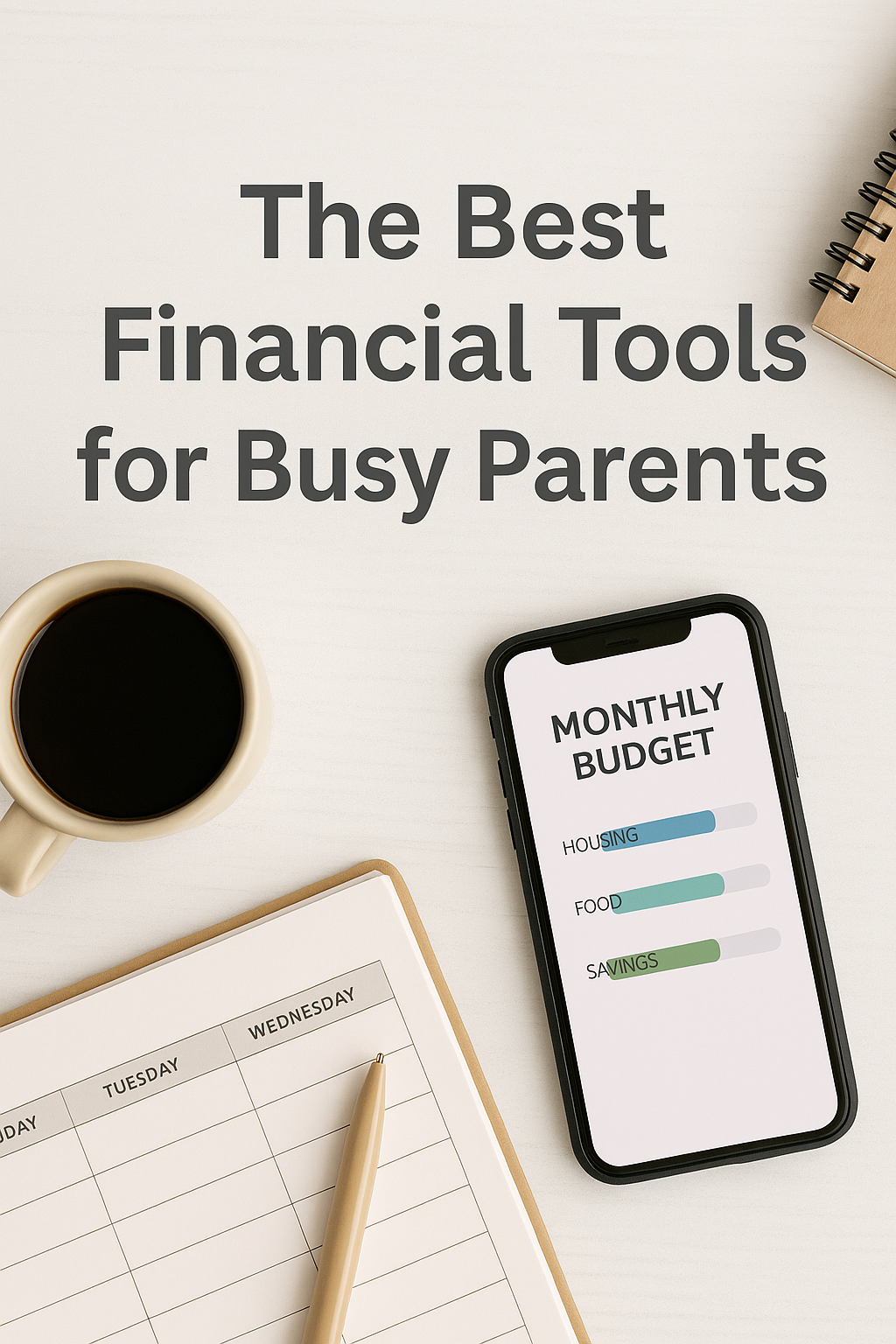Why the Right Financial Tools Make All the Difference
Parenting is a full-time job — and when you combine that with work, school runs, cooking, and managing a household, staying on top of your finances can feel overwhelming. That’s why having the right financial tools isn’t just helpful — it’s essential.
The best financial tools aren’t complicated. They’re time-saving, user-friendly, and built to give busy parents peace of mind. Whether you want to track spending, save for your child’s future, or just stop the monthly budget stress, there’s something here for you.
Here’s a curated list of financial tools that can simplify money management for even the busiest families.
1. Budgeting Tools
YNAB (You Need a Budget)
YNAB is ideal for parents who want control over every dollar. It uses the zero-based budgeting system — every dollar you earn gets a job, whether it’s for bills, groceries, savings, or debt.
What makes it great for parents:
- Real-time syncing across devices (great for couples)
- Encourages planning for future expenses like school supplies, birthdays, or vacations
- Friendly support and helpful tutorials
Cost: $14.99/month or $99/year (with a free 34-day trial)
Best for: Families who want structure and are ready to commit to a budgeting habit.
Goodbudget
Goodbudget uses the traditional envelope system — but in a digital format. It’s simple and effective, especially for couples who want to track shared expenses.
Key features:
- Easy to use with minimal setup
- Separate envelopes for groceries, kids’ needs, school fees, etc.
- Syncs between multiple devices
Cost: Free version with 10 envelopes; $8/month for unlimited
Best for: Families who prefer a hands-on, visual budgeting approach without a learning curve.
2. Expense Tracking Apps
Mint (by Intuit)
Mint remains a favorite among busy users because it automatically pulls in your transactions, categorizes them, and gives you instant insight into your finances.
Benefits for parents:
- Automatically tracks spending by category (groceries, kids’ activities, gas)
- Sends bill reminders and budgeting tips
- Gives you a snapshot of your entire financial picture in one place
Cost: Free (with optional paid features)
Best for: Parents who want automation and simplicity without doing the math themselves.
Spendee
Spendee combines budget tracking with a beautiful, easy-to-use interface that’s perfect for visual thinkers. It allows you to create shared wallets — ideal for households with multiple income sources or part-time jobs.
Why parents love it:
- Can create multiple budgets (e.g., home, travel, back-to-school)
- Syncs with bank accounts or manual input
- Helpful charts to understand where money is going
Cost: Free version; Premium $2.99/month
Best for: Parents who want a visually engaging budgeting experience.
3. Savings and Investment Tools
Qapital
Qapital automates savings based on your rules — like rounding up purchases or setting aside $5 every time you make a coffee run. This is ideal for building small savings habits without effort.
Great for parents who want to:
- Save for family trips or Christmas gifts
- Set aside money for unexpected kid-related costs
- Create multiple goals (e.g., vacation, new appliance, rainy day)
Cost: Starts at $3/month
Best for: Families who struggle to save consistently and want to automate progress.
Acorns
Acorns helps you invest automatically by rounding up spare change from purchases and putting it into a diversified investment account.
Family perks:
- “Early” accounts for kids (Acorns Early) — helps you start investing on behalf of your child
- Passive investing, no decisions needed
- Simple interface, great for first-time investors
Cost: Plans start at $3/month
Best for: Parents who want to build long-term wealth passively — and introduce their kids to investing early.
4. Financial Planning and Goal Tracking
Monarch Money
Monarch helps you set goals and track your progress with clarity. You can connect all your accounts and use it with your spouse or partner to stay aligned.
Best features for parents:
- Set specific financial goals (like saving for college or buying a car)
- Track net worth and debt repayment
- Invite a partner to co-manage money in real time
Cost: $14.99/month or $99/year
Best for: Goal-driven families who want a clean, powerful dashboard.
Zeta
Zeta is built specifically for couples and families. It offers tools to manage shared and individual finances, track bills, and create shared goals.
Why it’s family-friendly:
- Combines budgeting and communication tools
- “Money dates” reminders to check in as a couple
- Shared bill tracker to avoid missed payments
Cost: Free
Best for: Couples balancing joint and personal expenses with kids in the mix.
5. Kid-Friendly Financial Apps
Greenlight
Greenlight is a debit card and financial app for kids — managed by parents. It teaches children money basics like saving, spending, and giving.
How it helps families:
- Set chores and pay allowances automatically
- Monitor your child’s spending in real time
- Encourage saving with built-in interest boosts
Cost: $4.99/month and up
Best for: Parents who want to raise money-smart kids and reduce cash management.
BusyKid
BusyKid combines chores, allowances, and investing. It lets kids earn money, choose how to spend it, and even invest in real companies — all with parental approval.
Why it works:
- Teaches earning and responsibility
- Empowers kids to build saving habits
- Helps families have ongoing financial conversations
Cost: $4/month per family
Best for: Families with school-age children ready for real-life money practice.
Final Thought: The Right Tools Save Time and Build Confidence
You don’t have to do everything manually — or remember every receipt. The right financial tools can reduce your mental load, save you time, and help your family work toward shared goals more smoothly.
Whether you’re looking to budget, save, track expenses, or teach your children about money, there’s a tool to make your life easier. Start with one app that fits your current need, then build your toolkit as your family grows.
